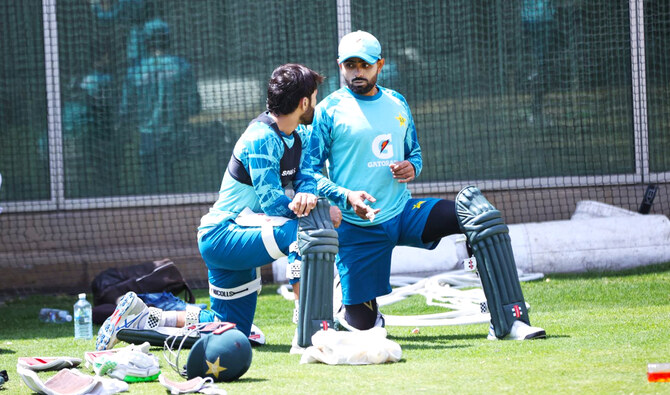ISLAMABAD: Pakistan will head into the first ODI against Australia on Monday with fiery fast bowlers Shaheen Shah Afridi, Naseem Shah, Haris Rauf and Mohammad Hasnain featuring in the playing XI squad, the Pakistan Cricket Board (PCB) said.
Pakistan’s new white-ball skipper Mohammad Rizwan will lead his side for the first time since assuming captaincy this month at Melbourne against Australia on Monday.
The South Asian country is scheduled to play three ODIs on Nov. 4, 8 and 10 in Melbourne, Adelaide and Perth, respectively before taking on Australia in a three-match T20I series on Nov. 14, 16 and 18.
“The men’s national selection committee has confirmed Pakistan’s playing XI for the first ODI against Australia,” the PCB said in a statement.
Rauf and Hasnain have both had ample experience playing on Australian pitches for the Big Bash League (BBL). Both bowlers have the ability to bowl above 150 kmph and bamboozle batters through sheer pace.
Australian pitches favor pace and bounce, serving as ideal hunting grounds for pacers from Australia, South Africa, Pakistan and the West Indies in the past.
Afridi and Shah, Pakistan’s experienced pace bowlers, will return to the squad after they were dropped from the Test squad after England drubbed Pakistan in the first Test in Multan last month.
Former Pakistan captain Babar Azam and Kamran Ghulam have both been included in the squad while the green shirts will rely on openers Abdullah Shafique and Saim Ayub to deliver the goods with the bat against Australia.
Playing XI:
Abdullah Shafique, Saim Ayub, Babar Azam, Mohammad Rizwan (captain), Kamran Ghulam, Salman Ali Agha (vice-captain), Muhammad Irfan Khan, Shaheen Shah Afridi, Naseem Shah, Haris Rauf, Mohammad Hasnain






















